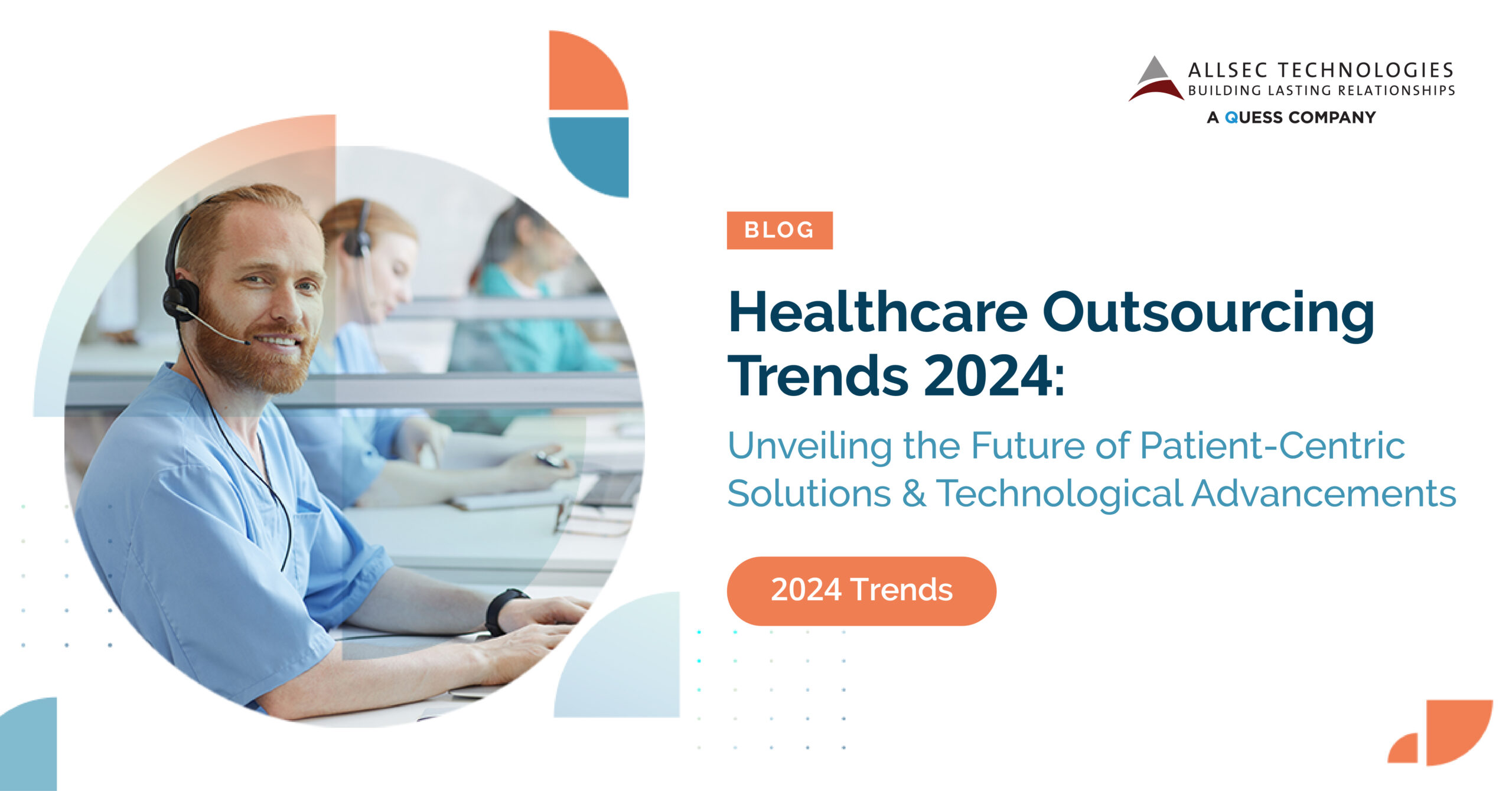
As the healthcare landscape continues to evolve, we find ourselves at the precipice of numerous exciting trends. The global healthcare outsourcing market is on a trajectory to reach an impressive US$341.5 Billion by 2024, boasting a notable compound annual growth rate (CAGR) of 9.8% throughout the analysis period. From innovative technologies to enhanced patient experiences, the upcoming year holds promise and potential like never before.
Let’s explore the trends that will shape the way healthcare support is delivered, and how it can drive value for your organization.
Increased adoption of remote patient monitoring (RPM)
RPM allows healthcare providers to monitor patients’ vital signs and other health data remotely, using wearable devices and other technologies. This trend is expected to continue in 2024, as more and more patients demand the convenience and flexibility of remote care. The global remote patient monitoring systems market was estimated at $965 million in 2021 and is expected to surpass $5,101 million by 2030.
Growth in the use of artificial intelligence (AI) and machine learning (ML)
AI and ML are being used in various ways to improve healthcare delivery, from developing new diagnostic tools to automating administrative tasks. As AI and ML technologies mature, we can expect to see them play an even greater role in healthcare outsourcing in 2024.
Expansion of value-based care (VBC)
VBC is a healthcare delivery model that rewards providers for improving the quality and outcomes of care, rather than simply the volume of services provided. This trend is expected to accelerate in 2024, as more and more healthcare payers adopt VBC models.
Increasing Cases of Internet Frauds in the Healthcare
The global healthcare cybersecurity market is experiencing robust growth due to the upsurge in digital services in the healthcare sector. This has led to a substantial increase in cyber threats, including phishing scams, ransomware attacks, and data breaches. Countering these threats is a significant driver of market growth, spurring the demand for healthcare cybersecurity solutions.
Here, it’s crucial to highlight the role of compliance authorities in safeguarding the healthcare industry against fraud. The Office of Inspector General (OIG), operating under the U.S. Department of Health and Human Services, plays a pivotal role in auditing fraudulent claims. The OIG’s diligent oversight ensures compliance within the healthcare sector, serving as a critical deterrent against fraudulent activities.
Furthermore, the proliferation of Internet of Things (IoT) devices in healthcare has broadened the attack surface for cyber threats. As more connected devices integrate into healthcare operations, unethical hackers exploit vulnerabilities, contributing to the growth of healthcare cybersecurity systems.
Here are some specific steps that healthcare companies can take to prepare for the healthcare outsourcing trends of 2024:
- Develop a strategic plan for healthcare outsourcing: This plan should identify your specific needs and requirements, as well as the risks and benefits of outsourcing.
- Evaluate outsourcing vendors: Thoroughly assess their experience, track record, and ability to meet your specific needs. Ensure strict adherence to HIPAA for patient data security and confidentiality.
- Implement a risk management plan: Have a plan in place to mitigate the potential risks associated with healthcare outsourcing such as data security, compliance, and the quality of care.
- Monitor the latest trends: Stay up-to-date on the latest trends in healthcare outsourcing to help you identify new opportunities and mitigate new risks.
To excel in this dynamic environment, healthcare companies should craft a strategic outsourcing plan tailored to their unique needs, meticulously assess outsourcing vendors, and establish a robust risk management strategy. Staying abreast of industry trends and continuously adjusting to new opportunities and challenges will empower healthcare organizations to navigate the ever-changing terrain of healthcare outsourcing effectively.


